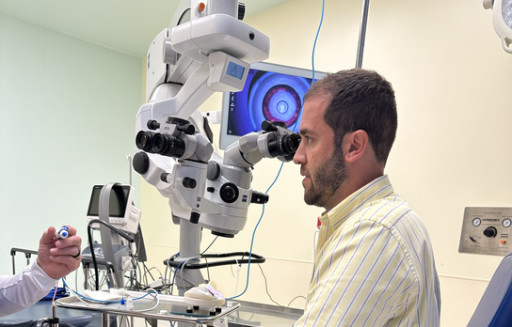All Categories
Featured
Table of Contents
Maintaining optimal eye health is important for a high quality of life, and normal eye examinations are a crucial component of that upkeep. Vision adjustments can take place at any type of age, making it important to customize eye treatment recommendations to different life stages. Below's an overview on how usually eye examinations need to be set up for different age teams to guarantee the very best possible eye health and wellness.
During this go to, eye care specialists evaluate aesthetic skill and check for any developmental issues. If no worries are kept in mind, the next eye test should happen prior to the child goes into college, commonly around ages 5 or six.
Parents should remain cautious for indications of vision problems, such as squinting, problem focusing on the blackboard, or complaining of frustrations. It's vital to arrange an exam promptly if any of these signs emerge. Regular evaluations make certain that kids can carry out well academically and get involved fully in tasks like sports.
![]()
Throughout young their adult years, individuals commonly experience fewer considerable changes in vision, yet regular eye exams remain important. Young grownups must have extensive eye examinations every two years. Those with threat aspects, such as a family background of eye condition, diabetic issues, or frequent call lens usage, might require annual examinations.
Young grownups are commonly based on electronic eye stress as a result of long term usage of smartphones and computer systems. Signs like dryness, tiredness, and obscured vision might occur from too much display time. If these signs and symptoms linger, seeking advice from an eye care specialist can lead to tailored remedies, such as computer system glasses or suggestions for way of life changes.
For individuals with underlying wellness conditions, such as high blood pressure or diabetes, even more frequent tests may be needed. Routine tracking is essential for taking care of these problems and guaranteeing that any kind of potential eye health issues are addressed quickly.
Senior citizens might additionally experience changes in their capability to see in reduced light or differences in color understanding. Normal examinations allow eye treatment experts to monitor these adjustments and offer suitable treatments, guaranteeing elders maintain their independence and quality of life.
Newborns and Toddlers (0-2 Years)
Eye wellness begins at birth. The American Academy of Pediatric medicine advises that babies have their initial extensive eye exam at around six months of age.During this go to, eye care specialists evaluate aesthetic skill and check for any developmental issues. If no worries are kept in mind, the next eye test should happen prior to the child goes into college, commonly around ages 5 or six.
Day Care Center and School-Aged Kid (3-18 Years)
Kids ages three to 18 need to undertake normal eye exams each to 2 years. Although colleges usually conduct fundamental vision testings, these do not replace extensive exams carried out by eye care experts. A detailed eye test evaluates not just visual skill however likewise eye control, tracking abilities, and overall eye health and wellness.Parents should remain cautious for indications of vision problems, such as squinting, problem focusing on the blackboard, or complaining of frustrations. It's vital to arrange an exam promptly if any of these signs emerge. Regular evaluations make certain that kids can carry out well academically and get involved fully in tasks like sports.
Young Person (19-39 Years)

Throughout young their adult years, individuals commonly experience fewer considerable changes in vision, yet regular eye exams remain important. Young grownups must have extensive eye examinations every two years. Those with threat aspects, such as a family background of eye condition, diabetic issues, or frequent call lens usage, might require annual examinations.
Young grownups are commonly based on electronic eye stress as a result of long term usage of smartphones and computer systems. Signs like dryness, tiredness, and obscured vision might occur from too much display time. If these signs and symptoms linger, seeking advice from an eye care specialist can lead to tailored remedies, such as computer system glasses or suggestions for way of life changes.
Grownups (40-64 Years)
Going into center age causes more noticeable modifications in vision, specifically the beginning of presbyopia, which influences the capacity to concentrate on close objects. Adults aged 40 to 64 need to have eye examinations every one to 2 years. This age is likewise at a higher risk for establishing problems such as glaucoma, cataracts, and age-related macular degeneration.For individuals with underlying wellness conditions, such as high blood pressure or diabetes, even more frequent tests may be needed. Routine tracking is essential for taking care of these problems and guaranteeing that any kind of potential eye health issues are addressed quickly.
Elders (65 Years and Older)
For elders, the need for normal eye exams becomes much more critical as a result of an enhanced threat of age-related eye diseases. It is generally suggested that people matured 65 and older have an eye exam at the very least once a year. Early discovery of conditions like cataracts, glaucoma, and macular deterioration is crucial for avoiding vision loss.Senior citizens might additionally experience changes in their capability to see in reduced light or differences in color understanding. Normal examinations allow eye treatment experts to monitor these adjustments and offer suitable treatments, guaranteeing elders maintain their independence and quality of life.
Verdict.
Recognizing the appropriate timetable for eye exams based on age is important for protecting eye wellness and making certain clear vision throughout life. By prioritizing eye treatment and sticking to recommended test routines, individuals can take positive actions to protect their vision and improve their total wellness.Latest Posts
Durable Metal Roofing Solutions for Your Business
Published Nov 23, 24
1 min read
Professional Roofing Services Across Illinois
Published Nov 23, 24
2 min read
Comprehending Specialized Eye Care Services Available for Kid
Published Nov 23, 24
0 min read